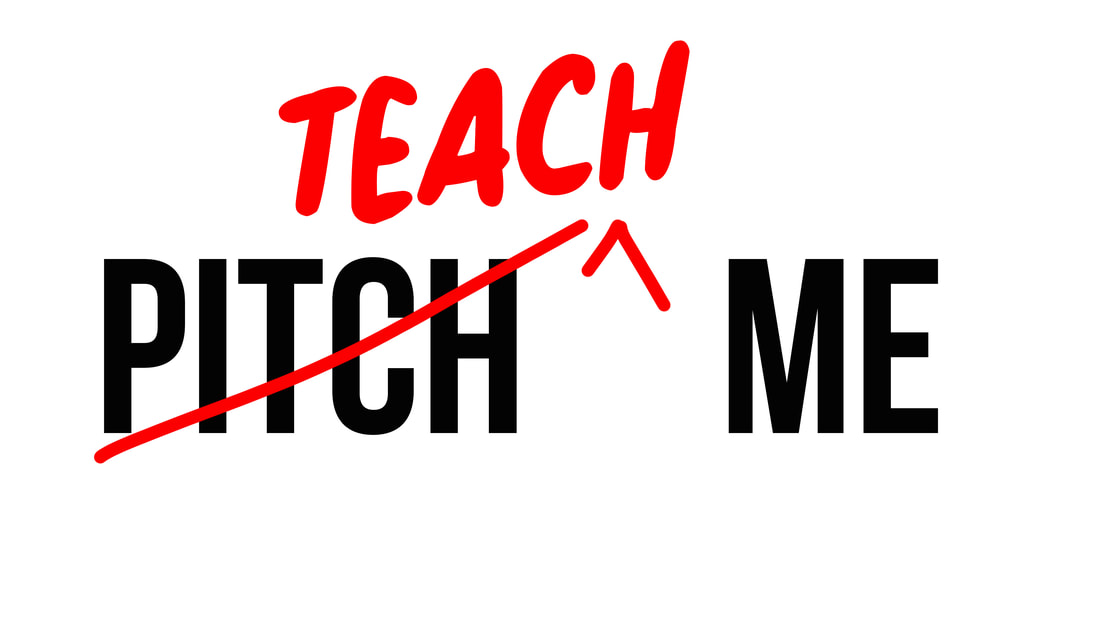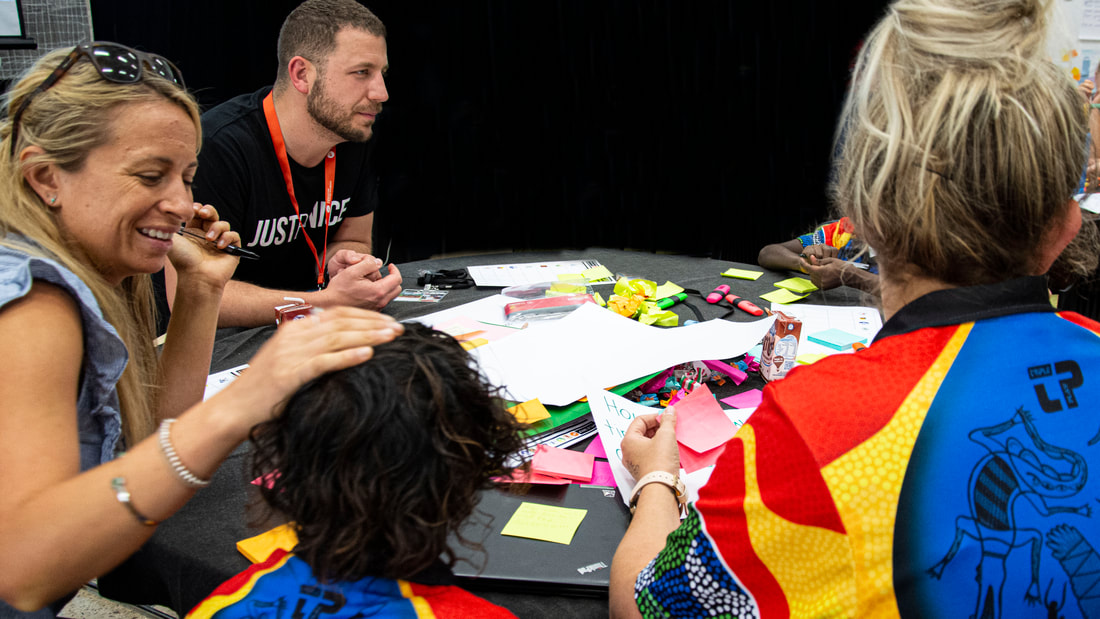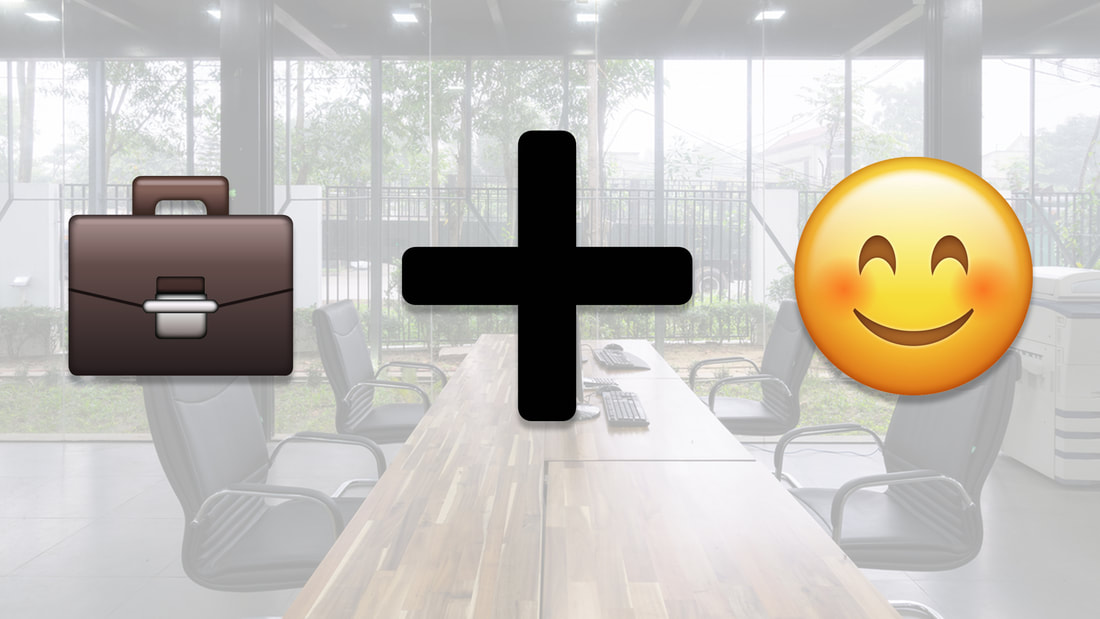|
While it features heavily as a buzzword among business leaders, entrepreneurs and educators; Empathy, and the reliance on it as a prime-mover of social conscience has some very significant shortcomings.
Empathy; the action of understanding, being aware of, being sensitive to, and vicariously experiencing the feelings, thoughts, and experience of another of either, without having the feelings, thoughts, and experience fully communicated in an objectively explicit manner. I am speaking at the moment of the kind of empathy that focuses on the empathiser feeling (or believing that they feel) the emotional state or experience of another. This definition of empathy, as opposed to a more high level of cognitive and rational understanding of the lives of others, is one that is frequently touted as beneficial because if you believe that you feel what someone else is feeling, you are more likely to have sympathy (feeling compassion, sorry or pity for hardships encountered by another) for them. And the emotional response of sympathy is the most effective driver of action. One of the main problems with empathy, is that we are not wired towards global-concern, or global, wide-ranging empathy. It is hard to imagine the feelings of 1,000 people, while much easier to put yourself in the shoes of one particular person. Empathy is skewed by culture, personal beliefs and experiences. Independent of facts, we are generally able to feel more empathy towards people that we look like, share cultural values with or who are going through moments similar to events we have experienced. Because of this, empathy works as a particularly effective advertising model, it is wonderful for heart-string-tugging advertisements, fundraisers or policy promotions. Like anything that works best in micro moments however, empathy acts as a spotlight. Spotlights have a time and a place, but in the context of solving large scale problems, building stronger understanding of the global village or improving equality of opportunity for everyone, including people that don’t look or sound like us, it is left wanting. An over-focus on individual empathy, over a wider context of understanding, learning and genuine connection poorly affects outcomes for problems that affect large numbers of people, require lots of intervention points, take a long time to achieve and are difficult to compute all at once. Well meaning, empathetic acts can, without a doubt, enhance the long-term suffering of people in need for a variety of reasons. Through promotion of inefficient, incomplete, short-term modes of assistance. Through promotion of highly emotive, visible and easy to understand kinds of disadvantage. Through a sense of ‘having done something’ through a single interaction, rather than a sense of ‘seeing what needs to be done’ that can be cultivated through an attitude of understanding and learning. Empathy can be exceptionally useful as a parent or a friend, to help identify the perhaps unspoken needs of those close to you, but as a vehicle to wider-reaching impact, it lacks the breadth to be up to the task. We should instead, focus on teaching understanding, opening eyes to broader contexts of life, difficulty and disadvantage. Improving exposure to the lives and ambitions of people from different cultures, countries and communities. We need a commitment to creating an eco-system focused on solving problems on a larger scale, for everyone, and ensuring that eco-system is able to function across a broad range of outcomes. The Just Be Nice Project is committed to building that eco-system, to establishing an integrated, long-term, comprehensive suite of programs that is dynamic and flexible to meet the needs of individuals and communities experiencing disadvantage. Regardless of whether the spotlight is on them or not, people need help. We intend to build the infrastructure that will deliver it, while teaching those involved and our partner organisations how to better understand, expand their worldview and participate in exponentially effective impact. If you’d like to be a part of that process, we’d love to have you. Please don’t hesitate to get in touch here.
In a time of unparalleled prosperity, general economic and technological advancement and inter-connectedness, how is it that there are still so many people in need?
Today, rather than start at the top and look at notions of wealth distribution and inequality, I would like to unpack the notion of charity as it operates in our modern world. Charity; “the voluntary giving of help, typically in the form of money, to those in need.” “kindness and tolerance in judging others.” Charity is voluntary. It is related to our judgement of others. It requires an imbalance of resources, allowing for discretionary distribution of those resources along ‘charitable’ lines. It is possible, to be wholesale contributing to the suffering of others in your day to day life, your work, or your business while still being ‘charitable’. Therein lies the main problem. The paternal, hierarchical nature of modern conceptions of charity leave the door wide open for manipulation, misdirection, misunderstanding and worst of all, incomplete, inconsistent and inadequate outcomes for those in need. A kind of modern day, PR driven papal indulgence where we can transact to save our souls. If we replaced notions of ‘Charity’ with notions of ‘Justice’, how would that change the way that we made efforts towards improving equality of opportunity? Justice; “the quality of being fair and reasonable.” Could we ever consider it ‘just’ that we fail to pay living wages to people? Could it be considered ‘just’ to punish someone for a lack of guidance, education and resources? Could a ‘just’ society unevenly distribute the ways and means for people to advance to be the best of their abilities, hamstringing people who might otherwise grow to be outstanding, productive, contributing members of our communities? Could a ‘just’ society ever allow people to go hungry when there is food, go cold when there are enough roofs or remain uneducated in a time of unprecedented knowledge sharing capabilities? I am not advocating for a free-market, capitalist, neo-liberal ‘the market fixes everything’ approach as the alternative to charity. I am talking about changing the way we speak about our responsibility to others, to continue to move towards an understanding that everyone needs help at some point in their lives. A society that values justice, “the quality of being fair and reasonable.” would try and ensure that everyone who needs help, gets it, regardless of how and when they come to need it. It is time to move from a conversation that focuses on paternal transactions for ‘people in need’, a conversation where the emphasis is on the giver, not the receiver. To creating a conversation about the needs of ‘People’ in a just society. If you are ready to move from a transactional model of altruism to a transformational one, The Just Be Nice Project is the only organisation of it’s kind working to change the way people help people. Get in touch if you’d like to find out more, we’d love to hear from you. “People don’t talk enough about how hard it is to make a change in the world, then you start and it’s really hard, and it isn’t talked about enough so how are people to know?” While this isn’t verbatim the conversation I had this weekend, it is a version of a sentiment echoed by a friend with aspirations to make positive, concrete change in the way that people go about their day to day work. I made the point that in fact, there are heaps of examples of people talking about how hard it is to build something significant, to change the way the world is. One of the challenges is, we are hearing about the tough times from people who are through it, the success stories, and we are far more exposed to the successful end result than the behind the scenes hard work that went into it, and rightfully so, most stories are only worth hearing if they’ve finished the job. Secondly, it is difficult because when you first hear about the tough times, it is usually in the context of your own excitement, enthusiasm and positivity around the beginning of your journey. I hear from new entrepreneurs, charity founders and young professionals; “I know it’s going to be hard.” “I’m prepared to make sacrifices.” “It’s better to be doing it for my own thing, than stressing about doing the work for someone else.” The narrative then often goes, you start something, then there is a ‘dip’ or a tough point, then you get through that, then you are home and hosed. Your dream is becoming a reality. A dip, or ‘the dip’ conjures up a vision of a downward run into difficulty, followed by a climb back up to where you were before, back on the path to success. In reality, building change is not about dipping off a path, it’s about climbing mountains. There are big mountains, and small mountains, some are steep, others more gentle. There are well-known mountains with established routes to the top, and also non-conventional, less-crowded, but more difficult routes. When you set out to change the world or build something, you are choosing a mountain to climb. Are you choosing a mountain that has been done many times before? If yes, then perhaps because some of the pitfalls will be well known, you can anticipate certain challenges. On the flip side, you will most certainly have competition on that route because most people like to tread on paths that they can see. There are very few legitimate trailblazers in the world. This can apply to industries and jobs and ideas that are already fairly well established. The downhill is the easier bit, not the hard part, it happens once you summit and you’ve gotten where you want to. If you want to get to the top quicker, because time is your main concern, you pick a smaller mountain, an easier, more visible route and you do more practice runs before you tackle it. There’s no shame in that at all. If you want to go somewhere no one has gone before, or blaze a trail that no one else has done, from start to finish, you are choosing a tougher mountain. This is not a dip, it is a difficult, unknown, uphill climb from day one until you get to the top. There will be almost no help, no map, no well-established place for you to rest. It will be hard, your will and resilience will be tested. There will be unknown hazards and you might be up there so long that the seasons change, you face rockslides, your gear fails, your hands and feet go numb and you are shaking from cold and hunger. If you tap out of the climb, you never make the summit. Leadership is not being in front of a group of people going up a well established trail, that is tour guiding. Leadership is blazing a new trail, on a new mountain. The higher and steeper the mountain, the harder it is, the longer it will take. You cannot know all the challenges, you must only be prepared to endure whatever it takes to summit. If you come back down and never try again, you have failed. If you come back down, up-skill, get in better shape and have another go, and another, and another until you summit… That is what resilience and commitment looks like. You can change mountains, you can jump onto a more established path, but you cannot claim to be a trail blazer at the same time. Commitment is getting to the summit you decided on at the very beginning and sticking at it until it’s done, not shopping around for easier mountains to climb. If you are treading an established path, study up, learn, go with a guide a few times before going it alone and you’ll find the journey on your own far more predictable. If you are blazing a trail, be prepared for difficulty, for people to think you’re nuts, for risk and for pain. The less preparation you’ve done, mentally, physically, with your equipment or your team, the harder any climb will be. If you are looking to make a change, a real, indelible, permanent and significant change, the only option is to take the hardest, steepest routes, the biggest mountains and blaze the trails that everyone else is too scared (or sane) to take. Downhill is something to aspire to, not be scared of. The downhill is the reward. Don’t fear the dip, fear not making it to the top. While I’m not necessarily the biggest fan of Tony Robbins, he said it well “Life's greatest rewards are reserved for those who demonstrate a never-ending commitment to act until they achieve.” Change isn’t easy. Be a leader, not a tour guide. - Josh Reid Jones - Founder - The Just Be Nice Project.
“What’s your elevator pitch?”
“Tell me in 10 seconds what you do?” “You have 2mins to pitch us on our ‘shark tank style’ pitch event” “You need a quick pitch that everyone can understand right away” “It’s the Uber of….” “It’s an app for…” I am hearing these all the time in conversations about ‘entrepreneurship’, ‘start-up’ or ‘innovation’, and it is harming progress. The main reason that it harms progress is that it makes complexity seem like a burden. That having a multi-levelled, detailed product seems unnecessary, unwieldy and inconvenient in an age where people are prepared to give you “10 seconds for a pitch”. If you are really, truly on the cutting edge, you will be doing work no-one else is doing, playing with concepts, processes and outcomes that no-body necessarily thought possible or probable, perhaps solving problems that people who aren’t at the cutting edge didn’t realise were problems in the first place. If you are comparing your work to something that exists, the uber-of or and app-that, then you are mostly repurposing an existing platform, perhaps making something more convenient, but not necessarily creating an innovation. Simplicity of concept does not mean a better concept. Simplicity of participation is key. Imagine trying to explain one of the simplest, most ubiquitous interfaces of our age, before it was well known. Google. Q: “What do you do?” A: “You type in what you are looking for on the internet, then we find if for you.” Q: Oh? Like Yahoo? A: No, not like Yahoo, we use different algorithms to determine the most relevant content for the search you have entered. Q: But what is your mission? A: “organize the world's information and make it universally accessible and useful.” Q: Oh, like a library, or a school, or a university? We already have those. Looking for a pithy “pitch” type explanation either leads to a conversation about the amazingly interesting complexity behind what it takes to organise the internet, or something that sounds vague enough that could apply to Yahoo, AOL, libraries or schools. Google has a simple interface. iPhones have a simple interface. They are not simple. They are complicated, with features and technology built into them that would take weeks and months to work through. Simple interfaces do not mean simple concepts. You should not have to have a ‘pitch’ that covers all of the working parts of your organisation in ten seconds. Rather than being intimidated by complexity, nuance and cutting edge expertise, we should ask people to teach us about their ideas, concepts, businesses and solutions. Teach us about why it might be necessary, Teach us about what is different and better about what your do, Teach us about how you have cultivated your expertise and understanding at the cutting edge. Two minutes does not allow any real form of thoroughness to be put to ideas, so now there is a proliferation of ideas, pitches and people who have not been put through significant intellectual rigour, believing that a simple, ten second interaction is more important that an in depth, well considered solution or innovation. It’s true, some people are not going to get your idea, that is always the case regardless of what your idea is. Usually that simply means that the idea is not for them. There is almost nothing that is a universally understood or accepted idea. I have concerns that we are encouraging people to iterate at the expense of investigate, to pitch instead of teach and to look for quick, simple solutions, instead of simple ways to engage people in complete, comprehensive, well thought out and logically consistent solutions. How about instead of seeing how quickly someone can get a pitch out, we see how deeply they’ve considered the problems they’re trying to solve. Instead of wanting a slogan, probing for intellectual rigour in the foundation of what they are doing? Instead of relying on emotion, we dig deeper into the durability of their methods? We would love to see ‘teach’ culture become more prominent than ‘pitch’ culture. We would love to see rewards for those bringing depth over hype, and real cutting edge innovation over re-packaged existing solutions. Don’t be wary of intricate solutions, be wary of inadequate ones. Keep learning, keep working at the cutting edge and as always, Just Be Nice.
Given the hype online and in workplaces around the world, there appears to be a great appetite for ‘life changing’ conversations and for single attempts at interventions in the lives of others that ‘save’ them.
In reality “Life-changing” conversations are usually borne out of high levels of trust, understanding and care. People who need help rarely lean-in to advice given by complete strangers, even if it is good advice. I’m sure we’ve all shrugged off well-meaning, but seemingly irrelevant advice from a complete stranger before. There are several ways to have life-changing conversations, but the most consistently successful way is outlined below. Note, it takes time, it takes care, it takes understanding another person’s situation and it takes trust. This is why parents, teachers, old friends and sports coaches often feature heavily in stories about building confidence, ‘saving’ people and having significant, insightful impact in the lives of others. They take the time to build trust, understanding and care. While you can shortcut some of these elements, some of the time, getting the opportunity to change someone’s life usually requires investment on your behalf in their life. Whether you are a boss, a friend, a parent or just an associate of someone, taking the time to listen, care and understand them over time, is the most sure-fire way to get the chance to have a life changing conversation when they most need it. So here it is; One Way To Have A Life Changing Conversation. Step 1: Stop trying to have a life changing conversation. Step 2: Have lots of conversations, make an effort in these conversations. Step 3: Cultivate appropriate levels of care, trust and understanding. Step 4: Understand that you can’t ‘fix’ everyone. Listen, encourage the people you speak to open up and tease answers out of them, answers that they perhaps already are thinking about. Step 5: Keep going. Not to drastically change lives, but simply because you care. Over time, through many conversations, through many insights and opportunities for honesty, you may just have a life changing conversation… Even if you don’t know it just happened. In the meantime, just look for opportunities to have conversations. Human interaction is a necessary part of being a human and it is an absolute privilege to have the chance to share a moment in time with someone else and improve their life by moments. Make every moment and interaction with you positive, and you’ll be improving the world around you, even if you aren’t dispensing regular, earth shattering, life-changing insights to everyone that you meet. Keep paying attention, keep showing up, keep caring and as always, Just Be Nice. If you are looking for ways to build more effective communication, trust, care and understanding into how you and your organisation operate, get in touch regarding our workshops and presentations designed to help people, help people.
Is your strategy for supportive mental health outcomes in your workplace limited to posters in the tea room, the occasional morning tea and yoga once a quarter?
Are you making distinctions between mental health issues that are caused by your workplace and issues that people have due to events occurring outside your workplace? Of the issues that come up internally, are you taking the time to categorise them as issues arising between a couple of individual, or an individual and their team? Are you identifying what positive or negative affect the structure, culture and day to day operations of your workplace is having on your staff? Are your HR policies creating an environment of uncertainty? Are your processes for setting and talking about targets causing an unnecessary amount of stress amongst your staff? Have you decided as an organisation that happy, well adjusted people that feel secure will be more creative and productive? Are you ensuring that you are paying your staff a living wage? I see a lot of organisations treating mental health support strategy outcomes for staff as add-ons, non-central to the function of the organisation. Positive mental health support can, and should be part of the central functions of any organisation. Being clear about the principles that guide your day to day operations and working in consideration for your staff and clients from the top down is a great way to embed a culture that improves the lives of everyone involved, as well as profitability and economy. Next time you are thinking about assessing how you create an environment that supports, encourages and enhances the mental health and well-being of your people, get in touch to talk about ways to integrate organisational best practice in assessing, reporting, managing and supporting the mental well-being of your staff. Best practice is not a small bolt on, or simply a sub-committee of people that want to do events, it is structural and runs through the whole organisation for the better. The Just Be Nice Project, Transforming business and community for good. |
Just Be NiceA collection of articles relevant to pursuing the effective execution of altruism in the search for equality of opportunity. Archives
February 2020
Topics
All
|




 RSS Feed
RSS Feed